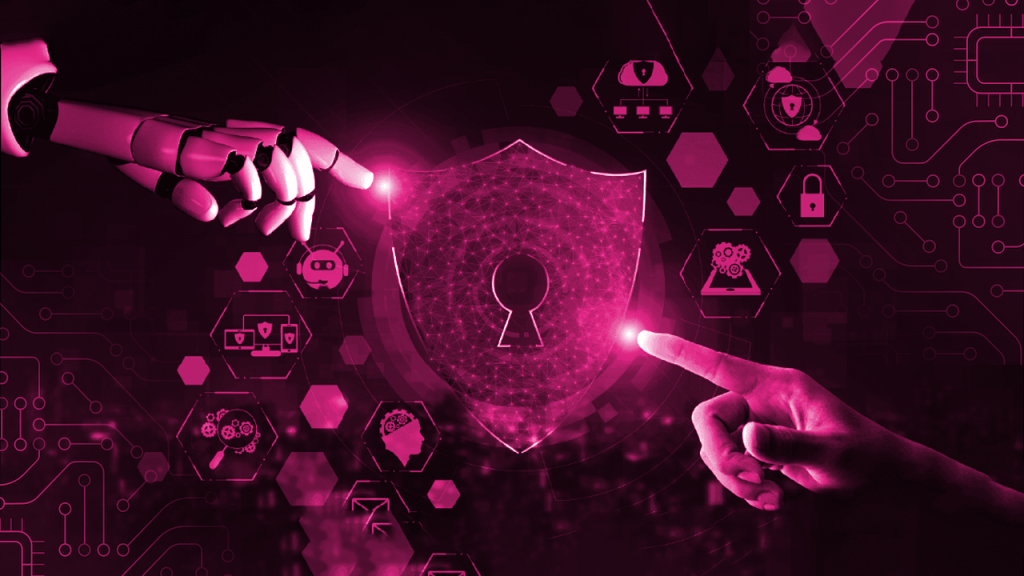For so long, everyone has been making assumptions and speculations about AI and its role in cyber security. While everyone is divided on using AI as a partner in protecting against cyber threats, we think otherwise. We understand that AI can be both a boon and a bane for cyber security, but it all depends on how it’s implemented and used. Let us introduce you to a balanced perspective with this blog.
We strongly believe that AI has the potential to significantly enhance cyber security efforts by improving threat detection, response, and overall security posture. However, it’s crucial to approach its implementation thoughtfully, addressing potential challenges such as false positives, data quality, and the potential for AI-enhanced attacks. A balanced approach that combines AI with human expertise and vigilance is key to reaping the benefits while minimising risks in the realm of cybersecurity.
How Can AI Be a Boon for Cyber Security?
AI can be a game-changing technology that is capable of revolutionising the field of cyber security. In this section of the blog, we will explore how AI can be harnessed to bolster cyber defences, detect vulnerabilities, and respond to attacks in real time.
In an increasingly digitised world, cyber security has become a critical concern for individuals, businesses, and governments. But as the volume and sophistication of cyber threats continue to grow, traditional security measures are often falling behind. This is where artificial intelligence can come in handy and save the day. Here is a list of areas where the integration of AI into cyber security represents a significant leap forward in our ability to protect digital assets and sensitive information.
Efficient Threat Detection and Analysis
AI can analyze vast amounts of data and detect patterns that might be missed by traditional methods. This enables quicker and more accurate threat detection, helping organisations respond to threats in real time. Even helps in identifying those threats that might go unnoticed by traditional methods. AI-based solutions employ machine learning algorithms to detect and react to both known and new malware threats, phishing attacks, etc.
Automated Response
AI can automate incident response, enabling rapid actions to mitigate the impact of cyber attacks. This reduces human error and response time, which is critical during an ongoing attack. In the event of a cyber attack, AI can automate certain incident response actions, such as isolating affected systems, limiting the spread of malware, and initiating predefined response protocols.
Predictive Analysis
AI can predict potential vulnerabilities and threats by analysing historical data, allowing organisations to proactively address security weaknesses before they’re exploited. AI can quickly analyse and prioritise vulnerabilities, making it easier for security teams to focus on critical issues rather than getting overwhelmed by a high volume of data. This proactive approach allows organisations to take preventive measures before attacks occur.
Vulnerability Assessment and Patch Management
AI can continuously scan software, systems, and networks to identify vulnerabilities that hackers could exploit. These assessments can prioritise vulnerabilities based on their potential impact and help organisations take proactive measures to secure their systems. These tools not only identify weaknesses but can also suggest remediation strategies and prioritise the most critical vulnerabilities for patching.
Adaptive Security Measures
AI adapts to evolving threats, ensuring that security measures remain effective. As hackers devise new techniques, AI systems can quickly adjust their algorithms to counteract these methods, providing a more resilient defence. AI can establish a baseline of normal behaviour for users and systems. When deviations from this baseline occur, AI systems can flag these anomalies as potential security incidents, allowing for quick investigation and response.
How Can AI Be a Bane and Used for Destruction?
False Positives/Negatives
Overreliance on AI can lead to false positives (legitimate activities flagged as threats) or false negatives (actual threats going unnoticed), potentially undermining the effectiveness of security systems.
AI-Enhanced Attacks
Hackers are using AI to develop sophisticated attacks that are more difficult to detect and counter, leveraging AI’s capabilities to exploit vulnerabilities. There have been reports of increased cases of AI-enhanced phishing attacks. Attackers are using AI to produce highly convincing and individualised phishing emails to coerce people into disclosing personal information or carrying out destructive deeds.
Advanced Evasion Tactics
Cybercriminals can now get through conventional security measures while remaining undiscovered by using AI-powered evasion tactics. Attackers can create malware that alters its behaviour on the fly to avoid AI-based detection systems. Malware can change its traits and signatures to get around current security measures. This makes it harder for security solutions to use reinforcement learning or generative adversarial networks (GANs) to detect and eliminate these threats.
Sensitivity to Data Quality
AI models require accurate and representative data to perform well. If the training data is biased, incomplete, or outdated, it can lead to incorrect predictions and decisions.
Combining AI with the Human Factor Is the Way to a Safer Future
Absolutely, the integration of AI and human expertise is a promising approach to enhancing cyber security. Truth be told, AI is here, and one must begin using it to their advantage before it is too late. This holds for cyber security as well. However, a complete reliance on AI is not advisable at the moment.
AI can be utilised to analyse vast amounts of data quickly, detect anomalies, and help identify potential threats. It can even automate some cyber security tasks, but human judgement and skill are still essential. Human oversight of crucial decision-making procedures is extremely crucial to avoiding the misuse of AI systems. The human factor brings critical thinking, context, and the ability to adapt to new attack methods. Together, they form a robust defence against evolving cyber threats. By including human oversight in crucial decision-making processes, one can duck poor judgements purely based on machine-driven decisions.
One critical point to remember is that AI technology and its application in cyber security should follow moral principles and accepted standards. Regulatory frameworks can enable responsible AI use and provide much-needed supervision, reducing the hazards brought on by malevolent AI use.
If you too are interested in involving AI in your company’s cyber security regime, GoAllSecure can help you. We can work with you to create an AI-inclusive cyber security plan for your business. Giving you a well-protected security posture and a relaxed mindset to work and grow. For more information about us, kindly visit us at https://www.goallsecure.com/ or call on +91 85 2723 7851 or +44 20 3290 4885.

















 TRAVEL & HOSPITALITY
TRAVEL & HOSPITALITY HEALTHCARE
HEALTHCARE RETAILS & ECOMMERCE
RETAILS & ECOMMERCE BANKING & FINANCIAL
BANKING & FINANCIAL AutoMobile
AutoMobile MANUFACTURING
MANUFACTURING FOOD
FOOD EDUCATION
EDUCATION



